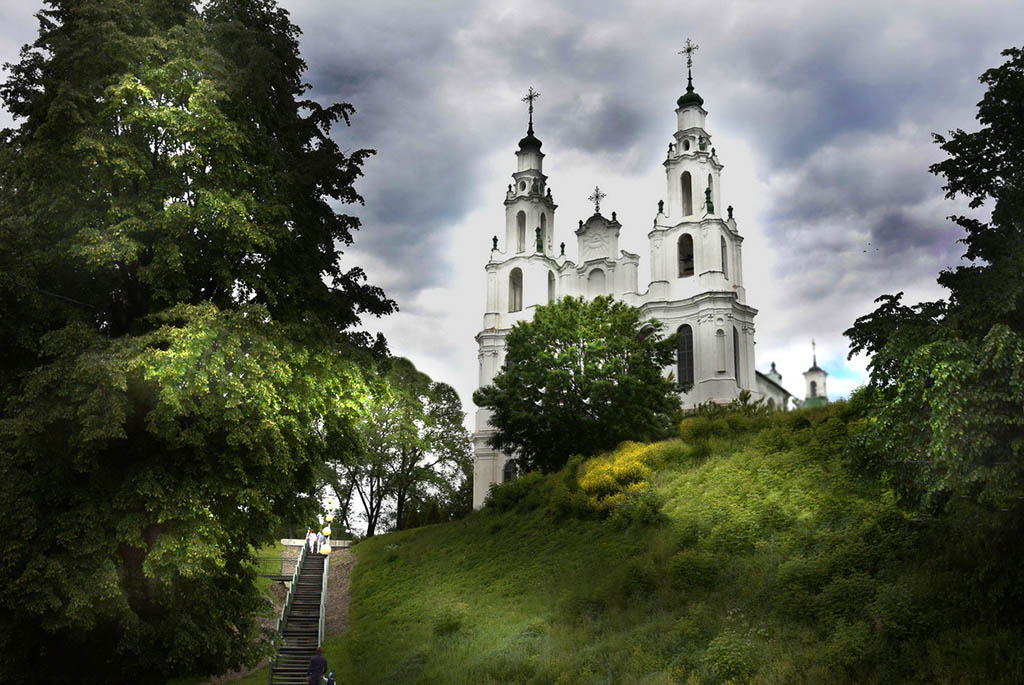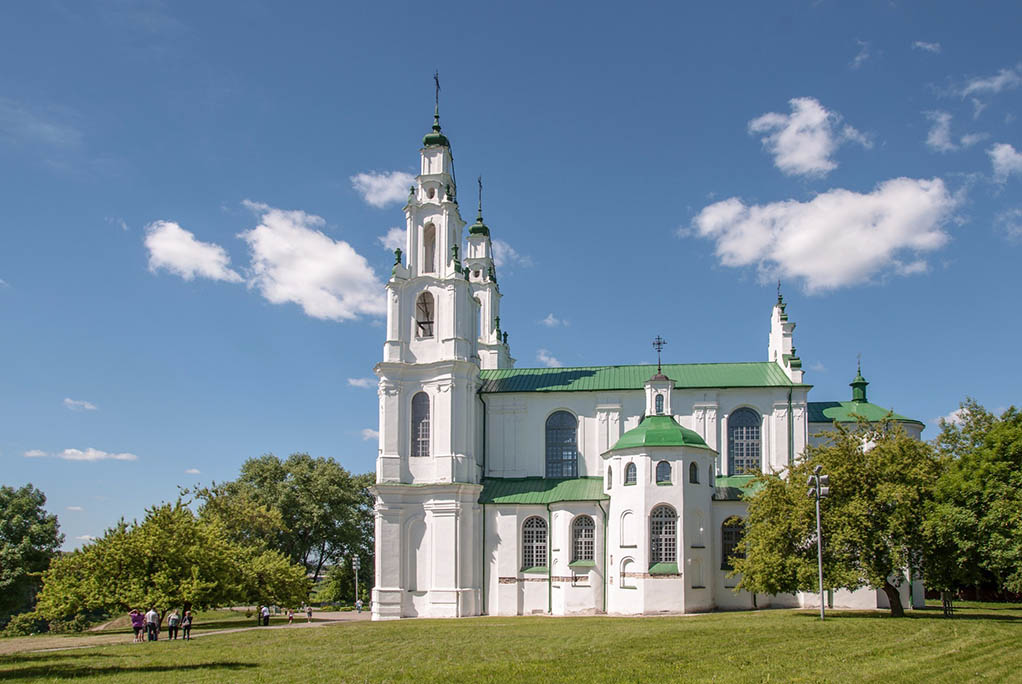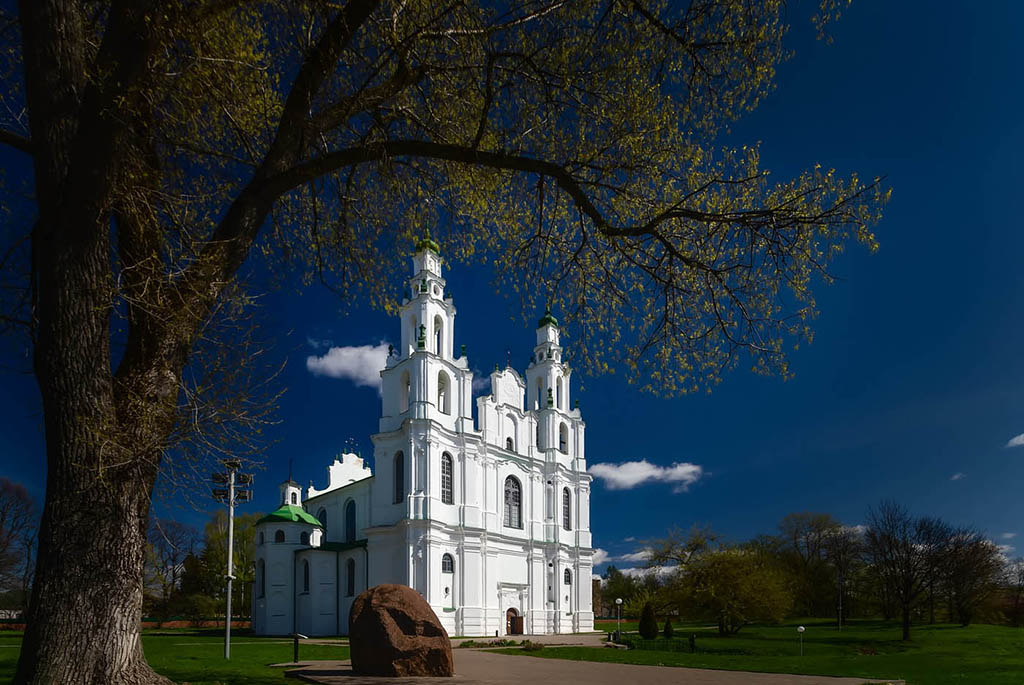The cathedral has reached our times in a modified form, as the building was repeatedly destroyed and rebuilt due to fires and wars. Historians have not yet come to a consensus regarding the original appearance of the cathedral in Polotsk. It is only known that it was built from unprocessed boulders and flat brick, using Byzantine technology. For that time, this was a grand construction. It remains so today, impressing visitors with its grandeur and beauty of the interior decoration.
For many years, the temple, located on the banks of the Western Dvina, remained the center of Orthodox culture of the Polotsk principality. Inside the building, there were books, archive documents, the treasury, the magistrate, the burial place of princes. Here, important religious relics were stored, and the cathedral was visited by ambassadors and state officials.
After the signing of the Union of Lublin, the Cathedral of Saint Sophia was handed over to the Uniate Church. At the beginning of the 18th century, during the war with the Swedish Kingdom, a gunpowder warehouse, that was in the temple, exploded, and the building was severely damaged. In the middle of the 18th century, the Uniate Archbishop F. Hrebnitsky took up the restoration of the building. He invited the architect I. Hlaubits to work on the temple, thanks to whom the cathedral acquired characteristic features of Vilna Baroque. The temple became a basilica, two towers were built on the south side, the interior was decorated with columns, paintings, molding, carved cornices, wooden sculptures.
During the war with Napoleon, French soldiers used the shrine as a stable. In the middle of the 19th century, after the abolition of the church union, the Polotsk temple returned to the bosom of Orthodoxy. With the arrival of Soviet power, worship ceased, and a local history museum was located within the walls of the religious building.
Saint Sophia Cathedral today
At the end of the 20th and the beginning of the 21st century, restoration works were carried out in the temple. The roof, window openings, and the facade of the building were renewed. Today, just like in the times of our distant ancestors, the cathedral remains the center of spiritual and cultural-educational life of Polotsk. The building hosts a museum exhibition dedicated to the history of the cathedral and its architectural features. Unique inscriptions, elements of masonry, fragments of 11th-century frescoes have survived to our times. Inside the church, you can even see a copy of Leonardo da Vinci's famous "The Last Supper".
Orthodox believers hold prayer services and festive worship at the walls of the main attraction of Polotsk. Every year in early June, religious festivities are held here in memory of Euphrosyne of Polotsk.
After an organ was installed in the temple at the end of the 1980s, concerts, organ, spiritual, chamber music festivals, and other cultural events are regularly held here. You can listen to the unique instrument within the walls of the temple every Sunday at 3 p.m.
Visitors can explore the Cathedral of Saint Sophia either through a guided tour or independently with the aid of an audio guide. Trains and buses run from Minsk to Polotsk. The car journey will take about three hours. Once you arrive in Polotsk, do not miss the opportunity to visit other sights of the ancient city - Peter the Great's house, the Jesuit collegium, the monument to the letter "Ў", as well as sites related to the work of outstanding Belarusian enlighteners Simeon of Polotsk and Euphrosyne of Polotsk.





